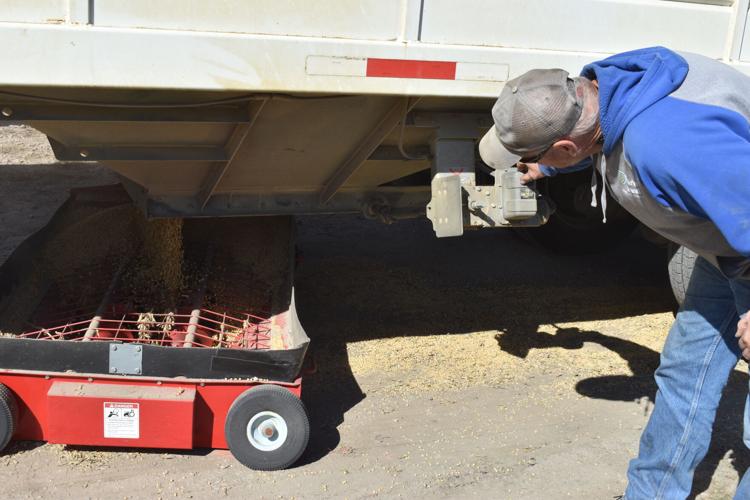
Brian Chichoine monitors soybeans as they're unloaded. Chicoine will store them in an on-farm bin before taking them to Southeast Farmers Co-op just a few miles south of his farm.
It's been a weird year.
Weird but good.
That was the general consensus from area farmers regarding the 2023 growing season.
Corey Chicoine of Elk Point, South Dakota, Brandon Hope of Sinai, South Dakota, and Brandon Fast of Mountain Lake, Minnesota, all grow both corn and soybeans.
For each of them, the year was dry, though not nearly as bad as last year.
Hope, who grows dryland crops, opted to no-till most of his soybeans and half of his corn this spring due to the extreme drought 2022 drought.
“Last year, we just couldn’t catch the rain, so the highlight of the year was seeing a good crop grow again after a couple of years of really below average crop,” he says.
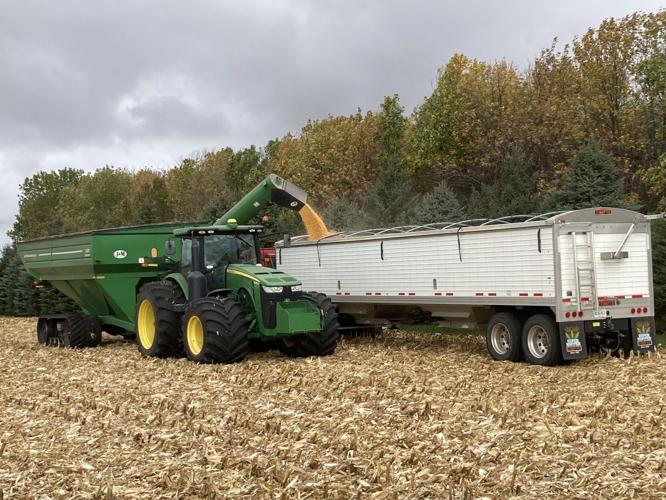
Brandon Hope unloads corn on his Sinai, S.D., farm.
However, because it was still fairly dry and relatively hot at his Brookings County operation, Hope’s crops seemed to mature earlier and dry out faster than normal.
He was done harvesting soybeans around Oct. 1 and started combining corn on Oct 5.
“It’s really, really early,” he says.
While harvesting corn in early October, moisture levels were around 16.5%, which the Sinai farmer says was unusual for the time of year.
Nonetheless, Hope was happy with his yields, even if they did vary from field to field, another issue he attributed to the lack of rain.
One field averaged more than 60 bushels per acre while another field less than 10 miles away pulled averages only in the 40s. But with his yields either average or well above average, Hope was pleased.
“If I could do it again next year, I’d love to have the same yields,” Hope says.
In southeastern South Dakota, Chicoine was pleased with his yields as well, despite the extreme heat. NOAA weather data confirms that June 2023 was the hottest on record, 1.89 degrees above the 20th-century average.
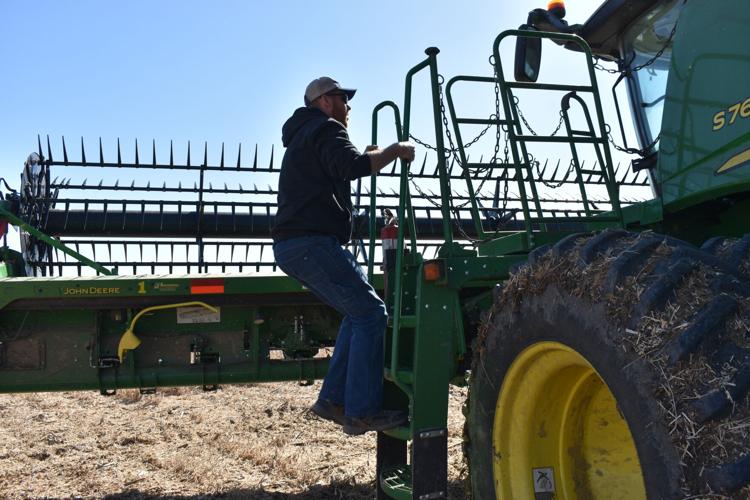
Corey Chicoine gets ready to harvest soybeans.
The Elk Point producer irrigates roughly half of his crops. Normally, he starts irrigating around July 1, but this year he had pivots running by the first week of June. At that point, he anticipated “a long summer chasing pivots around.”
But then July came with its unusually cool temperatures and showers, allowing Chicoine to back off his irrigation a bit.
The heat returned in August, but Chicoine says overall this year was considerably better than the last two years of nothing but drought.
Late August and early September heat may have caused his earlier maturing beans to have done better than other varieties. However, he says that their farm’s location, between bluffs and the Big Sioux River, creates a bit of an anomaly compared to the rest of the state.
“It’s almost like its own micro-climate,” he says.
Because of that, Chicoine says he’s not afraid to plant longer-maturing varieties of corn and soybeans.
Late August and early September heat may have caused his earlier maturing beans to have done better than other varieties. However, he says that their farm’s location, between bluffs and the Big Sioux River, creates a bit of an anomaly compared to the rest of the state.
“It’s almost like its own micro-climate,” he says.
Because of that, Chicoine says he’s not afraid to plant longer-maturing varieties of corn and soybeans.
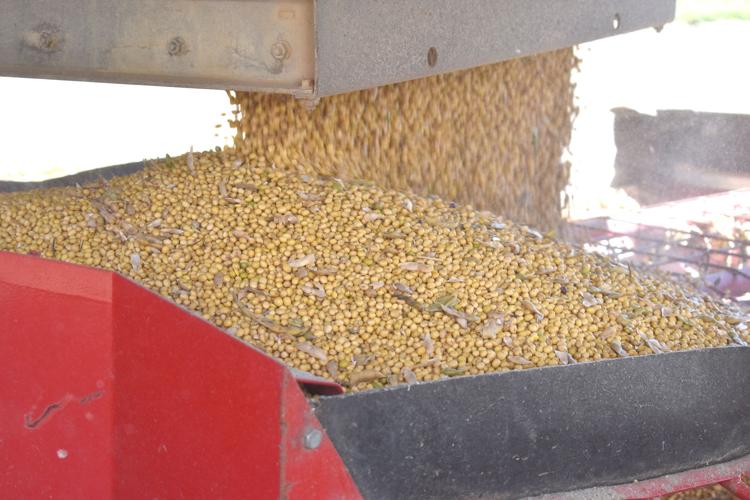
Soybeans are unloaded onto an auger at Chicoine Farms near Elk Point, S.D.
Despite the weather oddities, he was in the fields a bit earlier than usual this year, though he voluntarily pushed his start date back a few days.
He took some time away for fun. Chicoine drew a Black Hills elk hunting tag after just eight years of applying. That was extra exciting, given the 20-year average wait for many applicants, he says.
After a successful bull elk hunt, Chicoine, who farms with his father Brian, was eager to get into the fields.
Usually, he starts harvesting soybeans during the last week of September, but late-season rains meant they weren’t quite ready then. He harvested 200-300 acres of corn first.
As of Oct. 10, Chicoine still had roughly 700-800 acres of soybeans left to harvest.
The fall rains weren’t helping him.
With a soaking rain in mid-October, Chicoine says he won’t be surprised if he’s finishing up corn the second week of November, though he’s really hoping to be done by the first week.
While Chicoine is waiting out the rain this fall, it was spring rains that hindered Fast at his southern Minnesota farm.
Shortly after planting his corn in early May, the Cottonwood County farmer received 14 inches of rain in a three-day period.
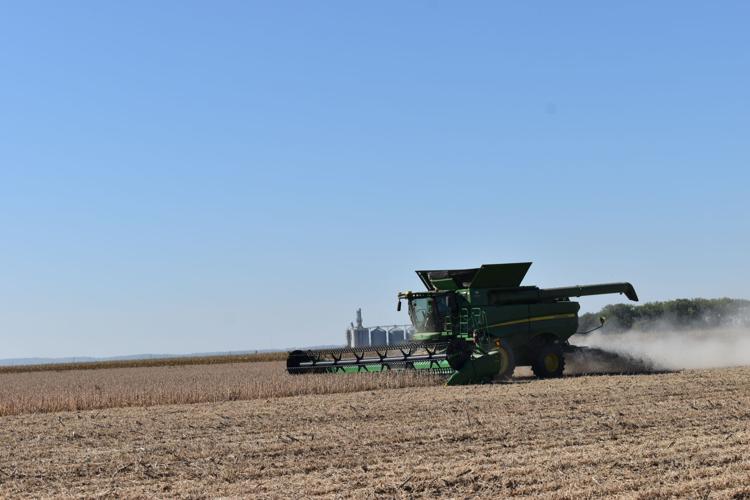
Brian Chicoine harvests soybeans near Elk Point, S.D., Oct. 10. Behind him stands Southeast Farmers Co-op, where the Chicoines will eventually take their crop.
“We ended up replanting 20% of our total acres of corn,” he says.
However, he’s right on schedule for both his corn and soybean harvest, if not slightly early. He began harvesting soybeans on Sept. 29 and finished up on Oct. 10.
Like his South Dakota neighbors, Fast is pleased with his yields thus far, even if they are below his 2022 numbers.
Last year, Fast harvested well above his actual production history (APH). Even though yields aren’t quite as strong this year, they’re still well above average, he says.
In 2022, his corn averaged 275 bushels per acre. This year, he’s averaging around 200. Given the summer heat, Fast says he can’t complain.
“I’m actually surprised and pleased,” he says.
Extra bushels will help the bottom line. While some input prices have dropped slightly in cost, they’re still relatively high. Fuel and electricity costs have increased while grain prices have dropped. Fast expects 2024 to be a challenging year, making him extra thankful for a bountiful 2023.
“We need all the bushels we can get,” he says.





